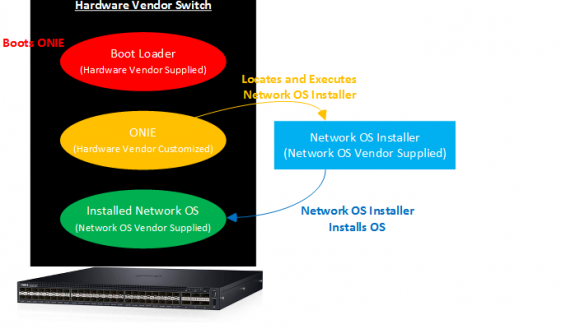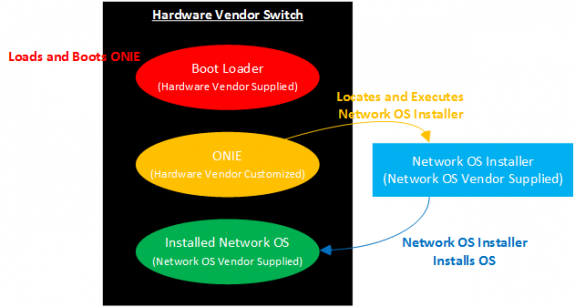
When Dell first announced its Open Networking initiative a little over a year ago, they were the first major networking vendor to do so. Very similar to what Dell did for servers, Dell is now doing for networking – allowing customers to choose their hardware and then choose what operating system they want to install.
It makes sense; today, would you ever expect to buy a server and be forced to choose the operating system based on what the vendor provides bundled with the server hardware? It seems rather ridiculous in an enterprise or data center environment where many flavors of operating systems today exist each with perhaps their own unique strengths, capabilities, customizations, and support models. Networking is in a position today where the decoupling of hardware and software makes sense and is possible.
With it’s Open Networking initiative, Dell has partnered with vendors such as Cumulus Linux, Big Switch Networks, and recently announced IP Infusion to offer customers choice of operating system to install on its Dell Networking data center switches,
such as the new 48 x 10GbE / 6 x 40 GbE S4048-ON switch (pictured to the right). Today, customers have the option to buy a Dell Networking Open Networking switch running Dell’s own network operating system DNOS (formerly known as FTOS); Cumulus Networks, Cumulus Linux OS; Big Switch Networks, Switch Light OS, or soon IP Infusions, OcNOS.With the recent announcement of the Dell Networking Z9100-ON 100GbE switch with multi-rate switching (10/25/40/50/100GbE), Dell now supports the installation of third party network OSes on 1GbE, 10GbE, 40GbE, and 100GbE switches!
S3048-ON: 48 x 1000BASET and 4 x 10GbE SFP+
S4810-ON: 48 x 10GbE SFP+ and 4 x 40GbE QSFP+ (can breakout to 10 GbE)
S4840-ON: 48 x 10GbE SFP+ and 6 x 40GbE QSFP+ (can breakout to 10 GbE)
S6000-ON: 32 x 40GbE QSFP+ (can breakout to 10 GbE)
Z9100-ON: 32 x 100GbE QSFP28 + 2 x 10GbE SFP+ (can support breakout to multirate 10/25/40/50/100GbE).
Additionally, Dell has built a powerful ecosystem of partners to provide customers choice in terms of SDN/network virtualization solutions. There is no shortage of Dell options available for customers in terms of SDN/network virtualization, some of which include partnerships with VMware, Microsoft, Midokura, Big Switch Networks, and NEC to name a few. I have written several prior articles on VMware NSX.
VMware, Microsoft, and Midokura all offer overlay SDN solutions while Big Switch Networks and NEC offer controller-based solutions with OpenFlow underpinnings for a disaggregate control plane/data plane model. I’ll also discuss some of these other SDN solutions in more depth in future posts as there are several important differences/highlights for each.
With this Open Networking and partnership model, Dell is providing more flexibility and choices to customers while providing an end-to-end infrastructure including servers, networking, and storage to support whatever solution the customer decides fits best based on their requirements.
So what has changed to allow this disaggregation of the network OS from the underlying hardware? Basically, an open install environment called ONIE (Open Networking Install Environment) has accelerated this movement forward; ONIE is an Open Compute Project that defines an open install environment for bare metal network switches. It’s an open source initiative contributed by Cumulus Networks, who also offer their own network OS called Cumulus Linux.
One thing that should be made clear is that ONIE doesn’t need to know anything about switch ASICs, because it’s not a network OS; it’s purpose is to load the network OS installer. ONIE is sometimes called an “enhanced boot loader,” and it utilizes facilities in a Linux/BusyBox environment. BusyBox packages several stripped-down Unix tools in a single executable file.
The network OS installer can vary depending on what network OS the customer requires. This is different than the traditional model where the hardware vendor bundles the switch with a boot loader that installs only their network OS. ONIE is an extension to the boot loader. On supported Dell Networking switches, the low-level boot loader is U-Boot and will go through the power-on self-test (POST) and boot ONIE.
After the network OS is installed, ONIE will still exist for uninstall/re-install operations but will not be used in the boot process; instead, the switch will boot right to the installed network OS.
The outline below shows some of the network OS options available today for Dell Open Networking switches. Timeline for support of some network OSes on different Dell Networking switches varies, and you’ll want to verify this ahead of time prior to purchase.
Dell, Dell Networking Operating System (DNOS):
- Proven in the industry and run in large-scale production environments for years.
- Large user base with many support channels and published articles/documents/RAs/blogs/etc.
- Robust L2/L3 and SDN feature set including VLT L2 multipathing, routed VLT, stacking, Proxy-ARP, VRRP, VRF-lite, RIP/RIPv2/OSPF/OSPFv3/BGP/ISIS, VXLAN, OpenFlow, Puppet agent integration, Python/Perl/Tcl native scripting, VXLAN L2 Hardware Gateway functionality, etc.
Cumulus Networks, Cumulus Linux OS:
- Linux-based network OS provides L2/L3 features including MLAG, VRRP, OSPF/OSPFv3/BGP, VXLAN, VXLAN L2 Hardware Gateway functionality, etc. The open source Quagga routing suite is leveraged by default. I have written several detailed articles on Cumulus Linux.
- Can leverage many robust Linux applications and integrate easily with a Linux environment.
- Can use Linux knowledge to help manage switches and provide customer solutions for managing servers and switches together.
Big Switch Networks, Switch Light OS:
- SDN operating system for bare metal physical switches, based on Open Network Linux (ONL). ONL is an effort within the Open Compute Project to provide a Linux distribution for bare metal switches.
- Can leverage SDN with Big Switch Networks centralized controller model. Two solutions available: 1) Big Tap Monitoring Fabric, and 2) Big Cloud Fabric (BCF).
- Can leverage Big Tap Monitoring Fabric which acts as a Network Packet Broker and allows for advanced monitoring capabilities.
- Can leverage BCF SDN solution which provide an SDN fabric and separates the control and data plane allowing for advanced automation capabilities.
- Extensive protocol support for MPLS and VPLS
- Extensive support for L2/L3 features including: MLAG, VRRP, VRF, RIPv2/OSPF/OSPFv3/BGP/MP-BGP/ISIS, LDP, MPLS, VPLS, etc.
IP Infusion, OcNOS (announced in April):
Follow me on Twitter: @Humair_Ahmed





 Twitter
Twitter LinkedIn
LinkedIn Youtube
Youtube RSS
RSS